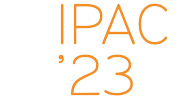Speaker
Description
State-of-the-art spin-polarized photo-electron sources use GaAs-based photocathodes to provide electron beams with high degrees of spin-polarization. Such photo-guns are required to operate with both quantum efficiency and cathode lifetime as high as possible in order to meet the requirements of high-current applications such as energy-recovery linacs and colliders. Both quantum efficiency and lifetime are determined by the quality of the thin surface layer, typically consisting of Cs in combination with an oxidant, required for GaAs photocathodes to achieve negative electron affinity. This layer is applied during a so-called activation process. It is therefore of great interest to optimize and standardize this procedure in order to provide the best possible conditions for reliable photo-gun operation.
This contribution presents the analysis of bulk-GaAs activations using Cs and O conducted at the Photo-CATCH test stand. The effects of Cs and O partial pressures on final quantum efficiency and lifetime, as well as the duration of the activation process were scrutinized in order to find an optimal partial pressure ratio at a reasonable duration of the procedure.
Funding Agency
Work supported by DFG (GRK 2128 “AccelencE”, project number 264883531) and BMBF
(05H18RDRB1)
| I have read and accept the Privacy Policy Statement | Yes |
|---|

